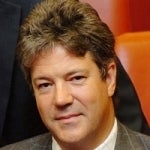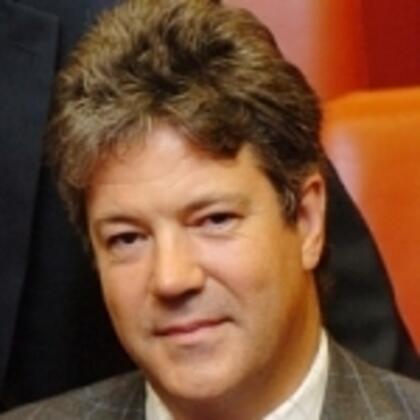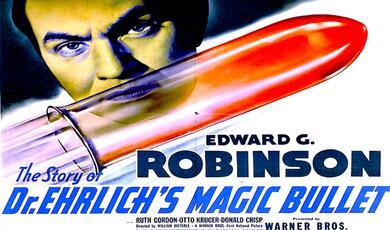Visual Perception
Share
- Details
- Text
- Audio
- Downloads
- Extra Reading
The eye, although a critical component of sight, is not where vision occurs. The ability to interpret the signals generated in the eye by the brain allows for the perception of vision. Sight is a complex sense requiring co-ordinated interaction amongst many regions and pathways of the brain. The untangling of these processes from the age of enlightenment through psychological experiments with optical illusions, to modern neural imaging, has revealed fundamental mechanisms of how the brain works.
Download Text
Visual Perception
Professor William Ayliffe
17/2/2010
Chevalier John Taylor in a lecture to students at Oxford stated; "The Eye has Dominion over all Things. The World was made for the Eye and the Eye for the World'". Whilst emphasizing the importance of vision, in keeping with the times, he failed to realize the importance of the brain as the organ of sight.
Indeed the brain had been relegated to a lowly role in the importance of organs since ancient times. However it was recognized that injury to the Brain was serious and the Ebers papyrus (a medical treatice from 1700BC but containing information from much older sources) instructs physicians not to treat such wounds.
Light is collected by the eyes and travels back via a crossing called the chiasm where half the fibres from each eye cross over to the other side. After a relay in the main nucleus of sensation in the brain (the thalamus) the information fans out in two pathways within each side of the brain substance to terminate in a deep fold (the calcarine fissure) on the inner surface of the cleft between the two lobes at the back of the brain. In the lateral geniculate nucleus of the thalamus discrete layers keep the information from the two eye separate. The visual world to the left of fixation passes to the right hand side of the brain and vice versa.
Until around 150 years ago the grey surface layer of the brain was believed to be an uninteresting structure acting as a surface rind for the white fibrous core.
Medieval philosophers believed that sensation, thoughts and memory resided in cavities or ventricles, called cells lying within the brain substance. The first of these was common sense, a phrase still in daily use. So persuasive was this reasoning that it persisted throughout the Renaissance with Leonardo even depicting the fictitious system in serious anatomical drawings.
The Ebers Papyrus c1700BC
Leonardo's depiction of the ventricles
With improving techniques of dissection, the structure of the brain was investigated over the next centuries with greater accuracy. Willis published a detailed illustrated anatomy of the brain. The best illustrations were by a former Gresham Professor best known for his architecture, Christopher Wren. These drawings were the most accurate depictions of the brain yet achieved and still rate as masterpieces of illustration.
Wren's illustration of the Brain in Cerebri Anatomie published 1664.
Until he started conversing with Angels, the Swedish polymath Emmanuel Swedenborg (1688-1772) had consolidated the written knowledge of the day into a comprehensive view of brain function that was centuries ahead of its time.
Unfortunately the work was destined to obscurity, whilst anatomists refined the detailed knowledge of the brain.
A breakthrough occurred with another theoretical but ultimately incorrect theory called phrenology. This system caught the public imagination and the fever serious academics were forced to experimentation to prove phrenology wrong. Paradoxically their early efforts were seen as supporting Gall's theories but soon it became apparent that none of the functions he assigned to bumps in the brain were actually present. More interestingly the surface of the brain, the cortex, was shown to control movements of muscles and later found to be involved in sensation, including sight.
Terrible injuries of the back of the head (the occiput) with increasingly fearsome weapons in terrible wars revealed the beautiful intricate mapping of the visual world onto a magnified distorted representation on the cortex, deep in the fissure of the occipital lobe.
Ultra-fine electrical recordings from neurons in this area by Hubel and Weisel, were initially unsuccessful because the wrong stimulus, a spot of light, was used.
In fact these cortical cells in the visual brain responded to lines in particular orientations. More sophisticated cells responded to bars of light of a particular orientation moving in a certain direction.
Here at last was the breakthrough that allowed scientists to uncover the architecture and function of the brain.
Further work has revealed maps of the visual world in adjacent areas of the brain. These areas seem to have special roles in analysing the scene into critical component parts, such as colour, form or motion. These pathways are analysed separately (parallel processing) to eventually build up the visual scene.
Psychological experiments have suggested that two main streams of information flow out from the primary visual cortex. One is involved in decoding signals to determine what the object is, the other is concerned with relations and where the object is located. This gross oversimplification ignores the interconnections between these paths and also other inputs that bypass the visual cortex altogether.
Fig 4: Compartmentalization of visual information from the lateral geniculate body to extrastriate cortex, Livingstone and Hubel (Science 1988)
However the explosion of knowledge about the structure and function of the visual brain has been critical to the understanding of how we see what we see and why we see it. This is the subject of a future lecture next term, which will use the information from this talk as a platform to discuss the complexities of the psychology of vision.
©Professor William Ayliffe, Gresham College 2010
Part of:
This event was on Wed, 17 Feb 2010
Support Gresham
Gresham College has offered an outstanding education to the public free of charge for over 400 years. Today, Gresham College plays an important role in fostering a love of learning and a greater understanding of ourselves and the world around us. Your donation will help to widen our reach and to broaden our audience, allowing more people to benefit from a high-quality education from some of the brightest minds.


 Login
Login







